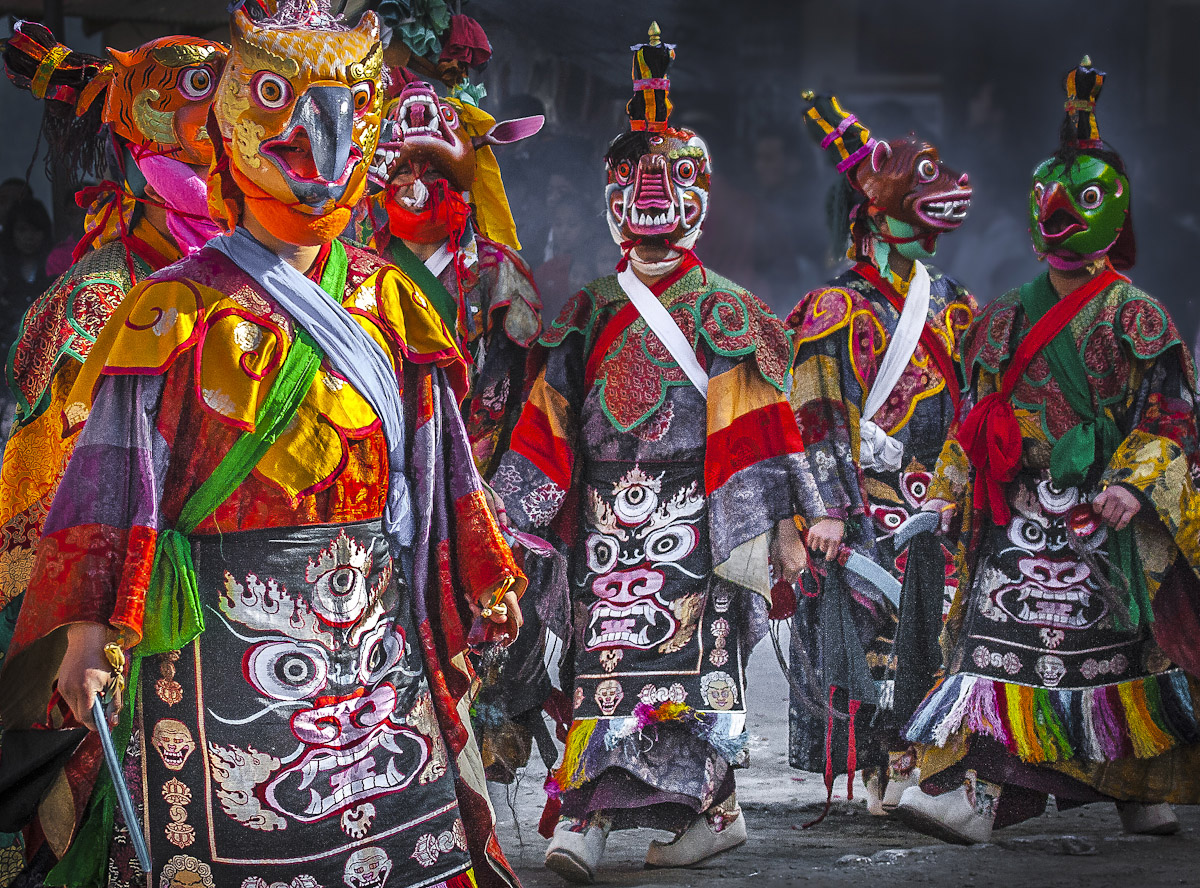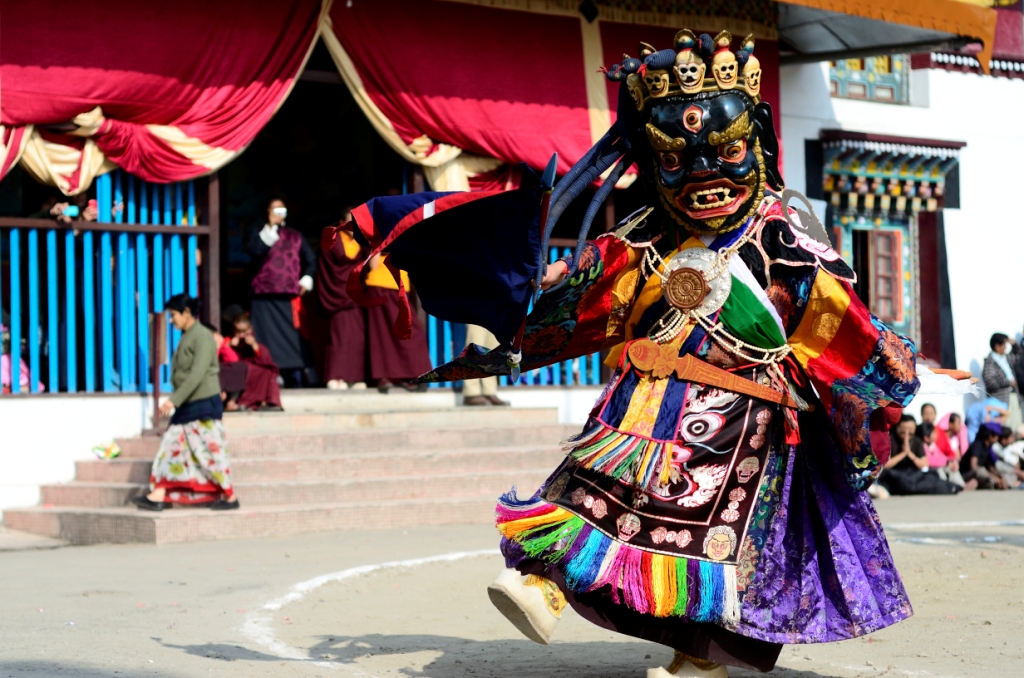1/ 2

2/ 2

❮
❯
Kagyed Dance
Kagyed Dance, locally
known as Kagyed Chaam, is an annual celebratory dance festival that is observed
by the Buddhists of Sikkim.
It falls on the 28th
and 29th day of the tenth month according to Tibetan calendar, which according
to English calendar falls in the month of December.
-->
Kagyed Dance, locally
known as Kagyed Chaam, is an annual celebratory dance festival that is observed
by the Buddhists of Sikkim.
It falls on the 28th
and 29th day of the tenth month according to Tibetan calendar, which according
to English calendar falls in the month of December.
The festival is held
in high regards by the locals as well as travellers from across the globe, who
believe in the teachings of Buddha and consider witnessing the Chaam as an
eternal blessing.
In the honour of
Kagyed-eight tantrik Gods and Goddesses, the monks performs dances and sing
songs at the monasteries, specifically at Old Rumtek Monastery, Phodong
Monastery and Tshuklakhang Palace Monastery, and offer prayers to the deity for
the well being of all sentient beings and to ward off evil.
The celebrations
commence two days prior to the onset of the Losoong. Monks elaborately dressed
in traditional attires with ceremonial swords and masks swaying to the rhythm
of echoing drums and trumpeting horns in graceful co-ordination depicting tales
from Buddhist mythology, notably the chronicles of Guru Padmasambhava and his
powers,
remains as a major
attraction of the festival.
The festival concludes
with the burning of effigies made of flour, wood and paper.
Religiously, Chaam is
considered to be a symbol of victory and it is believed that one who witnesses
the Chaam is blessed with good health and prosperity.
The history of Chaam
dances dates back to the times of Guru Padmasambhava, the founder of Tibetan
Buddhism in Sikkim, who is said to have performed this dance to a vanquish a
demon from this holy land.
Elaborate get up of
monks, clothed in ornate costumes, vibrant painted masks and laced with
ceremonial swords and weapons, swaying to the rhythm of echoing drums and
trumpeting horns, highlights as a major fascination for the tourists.
Read More
Activities
Chaam dance
Religious
rituals
Buddhist worship
Heritage Walks in
Monastery
Scenic Views
Archery
Social Media
Organized By
Tourism & Civil Aviation Department
Marcus P. Rai (Joint Secretary)
Paraytan Bhawan, Tadong 737102
03592232218
secy_tourism[at]yahoo[dot]com
How to reach
The nearest airport is Pakyong Airport,
which is 35 KMs away.
The nearest convenient railway station is New Jalpaiguri,
which is 114 KMs away.
The nearest major city is Gangtok,
which is 0KMs away.
